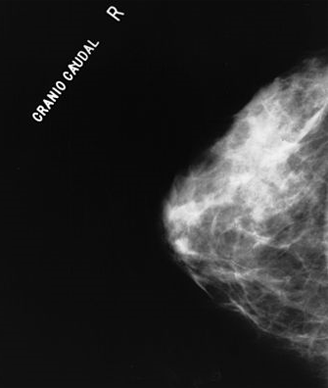False-Positive Mammograms Linked to Later Breast Cancer Risk
Women who previously had a false-positive mammogram or biopsy are at higher risk for developing breast cancer for at least 10 years, according to a new study.
False-positive screening mammograms were linked to higher breast cancer risk

Women who previously had a false-positive screening mammogram or biopsy are at higher risk for developing breast cancer for at least 10 years, according to a new study published in Cancer Epidemiology, Biomarkers & Prevention. False-positive screening may be a valuable factor to incorporate into risk prediction models, said the study authors.
Women with a false-positive result with additional imaging needed had a 39% increased risk of developing subsequent breast cancer during the next decade of follow-up compared with women who had a true negative mammogram result. Women who had a false-positive mammogram followed by a biopsy had a 76% increased risk of developing breast cancer later.
Results were similar for women with dense breasts. Women with almost entirely fatty breasts had a relative risk of 70%. Women with extremely dense breasts who had a follow-up biopsy had an 87% increased risk.
Louise M. Henderson, PhD, an assistant professor of radiology at the University of North Carolina Chapel Hill School of Medicine and the UNC Lineberger Comprehensive Cancer Center, and colleagues analyzed data from 1994 to 2009 from the Breast Cancer Surveillance Consortium. The data included women ages 40 to 74 years. During the 10-year follow-up, a total of 48,735 breast cancers were diagnosed. Most women (65.5%) who had a false-positive mammogram were between the ages of 40 and 59 years.
“Our finding that breast cancer risk remains elevated up to 10 years after the false-positive result suggests that the radiologist observed suspicious findings on mammograms that are a marker of future cancer risk,” said Henderson in a statement. “Given that the initial result is a false-positive, it is possible that the abnormal pattern, while noncancerous, is a radiographic marker associated with subsequent cancer.”
About 16% of first and 10% of subsequent mammograms produced a false-positive result. According to Henderson, the chance of having at least one false-positive result out of 10 mammograms is about 61% for women screened annually and 42% for those screened every 2 years. Women with a positive mammogram are usually referred for additional imaging, and a proportion of these women receive a breast biopsy.
Still, Henderson highlighted that the absolute increase in risk of a future breast cancer is modest. “We don’t want women to read this and feel worried. We intend for our findings to be a useful tool in the context of other risk factors, such as age, race, and family history of breast cancer.”
Gedatolisib Combo With/Without Palbociclib May Be New SOC in PIK3CA Wild-Type Breast Cancer
December 21st 2025“VIKTORIA-1 is the first study to demonstrate a statistically significant and clinically meaningful improvement in PFS with PAM inhibition in patients with PIK3CA wild-type disease, all of whom received prior CDK4/6 inhibition,” said Barbara Pistilli, MD.